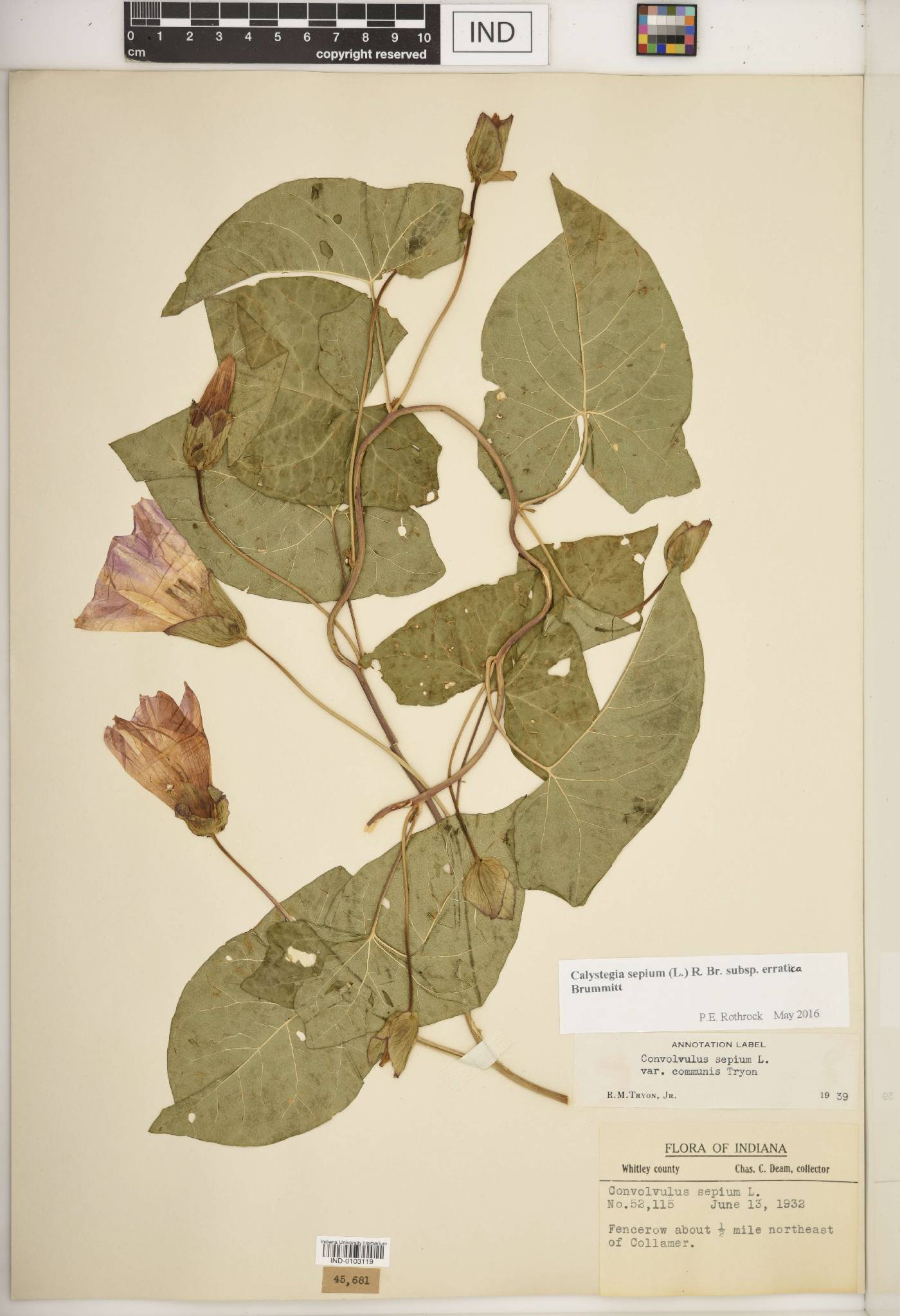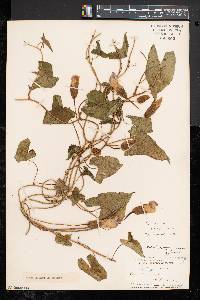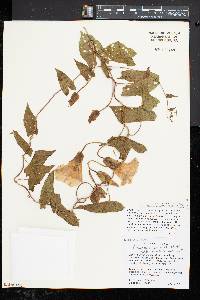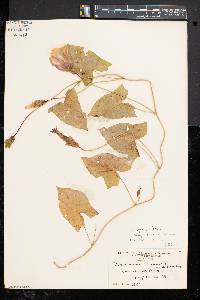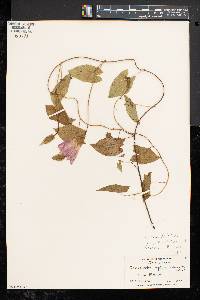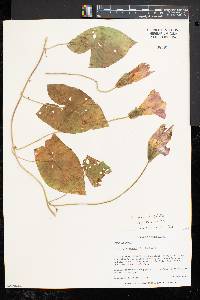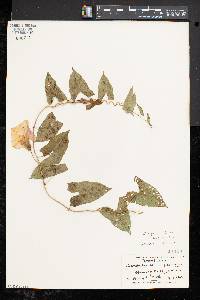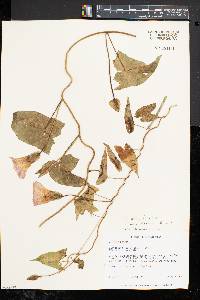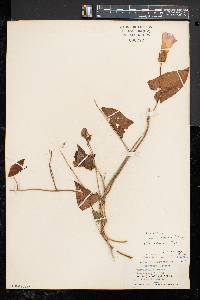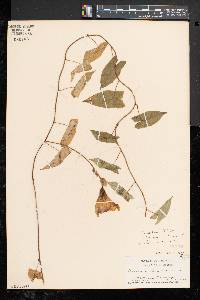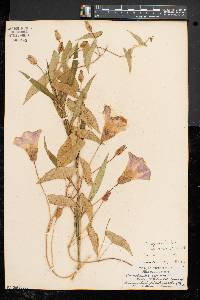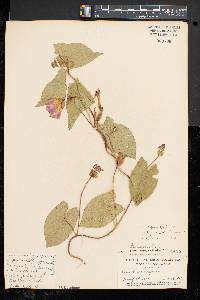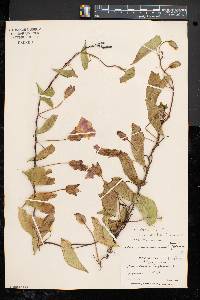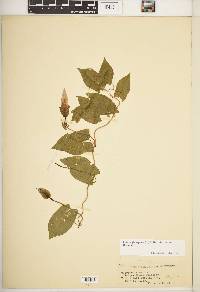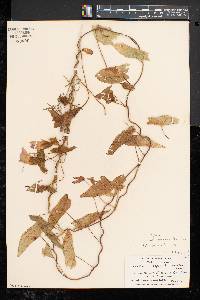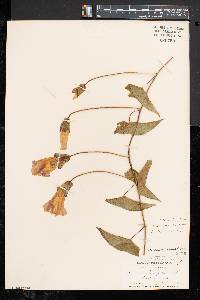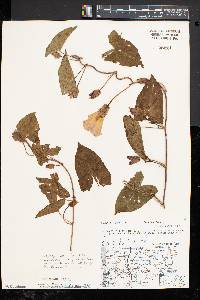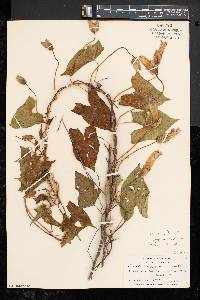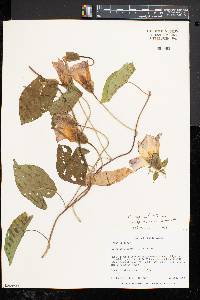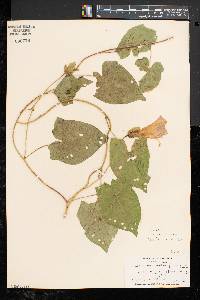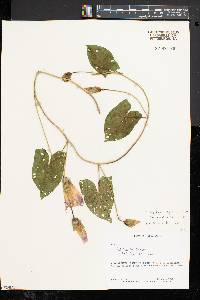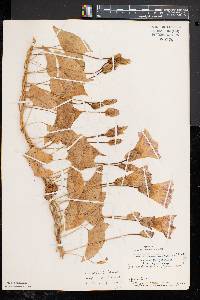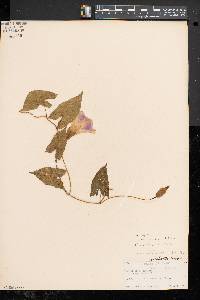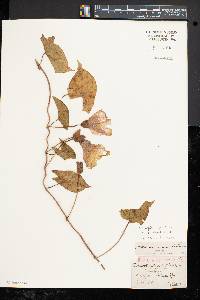Calystegia sepium subsp. erratica
|
|
|
|
Family: Convolvulaceae
Hedge False Bindweed
|
Perennial vine 1 - 4 m long Stem: strongly twisting, climbing or twining, elongate, hairless or hairy, and arising from a rhizome. If the stem is cut or broken, it exudes a milky sap. Leaves: alternate, long-stalked (stalks 5 - 15 cm), non-toothed, usually hairless above, sometimes sparsely short-hairy below, 5 - 10 cm long, longer than wide, somewhat spade-shaped with a very short tip, and two abruptly truncated downward directed basal lobes which have almost no space between them. Flowers: many, singly in leaf axils, long-stalked (longer than leaf stalk), pink, showy, 4.3 - 6 cm long, radially symmetric, tubular to funnel-shaped. Each flower is immediately subtended by two, 1.6 - 2.6 cm long, 1 - 2.4 cm wide, non-toothed, somewhat egg-shaped, blunt- or pointed-tipped, and slightly ridged (keeled) bracts which are almost indistinguishable from the sepals. Sepals: five, but very similar to the two bracts which appear to be in the same whorl, fairly large (1.5 - 2.5 cm long), egg-shaped with blunt or pointed tips. Petals: five, but fused into a long tube with expanded to flaring limb, which may be shallowly five-lobed or merely wavy along edges. Stamens: five, attached to inside base of petal tube, then separating for 2.5 - 3 cm, but not extending beyond petal tube. Pistil: with one, single-chambered, superior ovary; and a single, slender style which ends in two oblong, blunt, and somewhat cylindric stigmas. Fruit: stalked, several-seeded, single-chambered, rounded capsules. Similar species: Calystegia sepium ssp. erratica is quite different from all other Calystegia taxa since the bracts and sepals are so similar and appear to be a single series. The most common subspecies in our area, C. sepium ssp. americana, can be distinguished by the sharp V-shaped angle between the two basal lobes of the leaves, the long-tapering pointed leaf tip, bright pink flowers, and normally somewhat hairy stems, leaf stalks, and flower stalks. The other subspecies, C. sepium ssp. angulata, is a more western subspecies that has been reported a few times in the Chicago Region. It can be distinguished by its white flowers, hairless stems, and spreading basal leaf lobes which form distinct angles between the lobes and leaf sides, but have a wider almost U-shaped area between the lobes along the leaf base. Flowering: June to September Habitat and ecology: Rare, collected only one time in a meadow, but supposedly native. Occurence in the Chicago region: native Notes: This subspecies of Calystegia sepium is quite different from all the other seven or so subspecies. It appears to be distributed throughout the range of the other subspecies in North America, and Brummitt (1980) suggests it may even be reasonable to rank it as a separate species. The type specimen for this subspecies (the one used in reference when naming the taxon) was collected from Richland County, Illinois in the Lower Wabash Valley of southeastern Illinois. It is deposited in the herbarium of the Missouri Botanical Garden. Etymology: Calystegia is a combination of the Greek word kalyx meaning the whorl of sepals (calyx) of a flower, and stegon, meaning cover; together referring to the bracts that conceal the calyx. Sepium means "of hedges or fences", in reference to the common occurrence of the plant on fences and within hedges due to its twining and climbing nature. Erratica means wild or roving. Author: The Field Museum |

